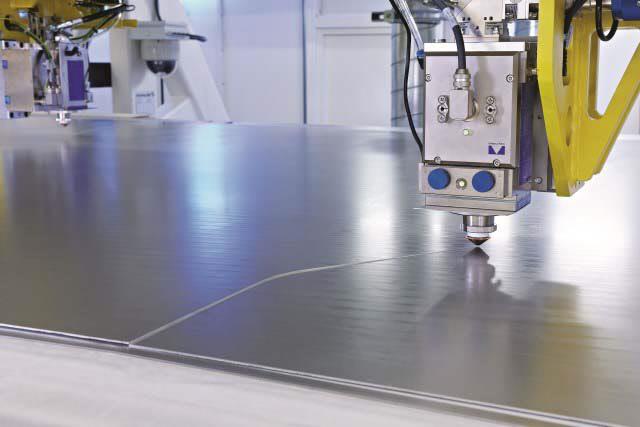Two laser blanking lines, called Dynamic Flow Technology (DFT) by Schuler, have been installed for the serial production of compact vehicles. They can be changed instantly to another cutting style at the touch of a button. Programming of the contours to be cut is undertaken offline and can be simulated for production optimisation. Without reliance on heavy dies, the pressing plant is said to be “optimally prepared for different types of upcoming car models in the next years”.
Three laser heads, working in tandem, cut contours in the system at a speed of more than 100 m/min from continuously coil-fed steel or aluminium sheet. A conveyor moves through the system at a speed of up to 60 m/min. Cut blanks are separated from scrap and stacked continuously. Two modern Schuler press lines in the same hall form these pre-cut blanks into chassis parts, which then are assembled in adjacent Mercedes-Benz Rastatt plant.
With high flexibility offered via this laser process, Daimler has already started to exploit the potential for material savings and is also optimising the forming process. Better production efficiency can be achieved in future with the laser-cut optimised blanks. Indeed, Schuler says that options to save material and reduce coil differences often lead to lower production costs when using DFT versus a conventional blanking systems.
Normally blanks are stamped by blanking dies that weigh upwards of 25 tons. These may cost up to €200,000 each, with that not including storage, repair and maintenance. And when there is a model change, form changes require modification or the production of a new set of dies that may take months to make.
A key influence in adopting this laser-based process was the fact that there was no need for the expensive foundations or a basement required for traditional blanking presses; indeed, the coil hall was unable to accommodate this.

Laser cutting blanks for forming; no large, expensive, long lead-time dies required










